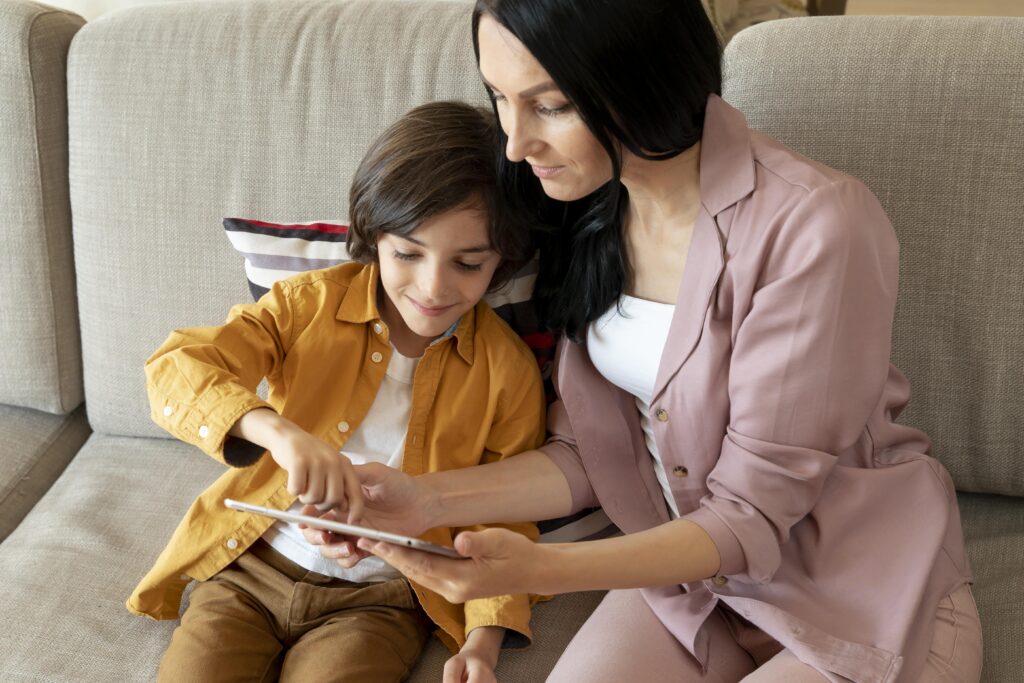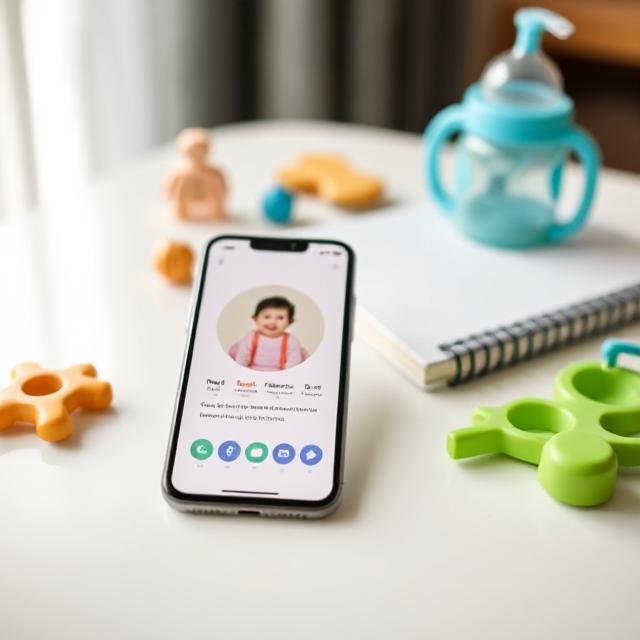Table of Contents
1. Introduction: The New Frontier of Smart Parenting App
In 2025, artificial intelligence has moved from science fiction into our living rooms. Children are chatting with AI companions, using tools like ChatGPT for homework, and even interacting with AI tutors and story-generators.
While this technology brings learning opportunities, it also introduces new digital safety challenges — from misinformation to emotional dependency. Parents across the UK and USA are asking: How safe is AI for children? and How can technology help me protect, not replace, my role as a parent?
2. The Generative AI Boom Among Kids
Recent surveys by Common Sense Media and Ofcom (2025) reveal:
- 68% of children aged 8–15 in the UK and USA have interacted with AI chatbots.
- 1 in 3 parents report their children using AI tools without supervision.
- The most common uses include homework help, creative writing, gaming, and emotional support.
This explosion in AI usage among minors has outpaced safety guidelines — making digital literacy and parental oversight more important than ever.

3. Key Risks of Generative AI for Children
AI tools can simulate empathy and intelligence — but they aren’t human. Below are emerging risks that parenting experts highlight:
a) Misinformation & Cognitive Bias
Generative AI can create convincing but inaccurate answers. Children may trust them blindly, leading to misconceptions or skewed worldviews.
b) Emotional Attachment
Some children begin treating AI companions like friends. This can affect emotional development, especially if the AI reinforces dependency or unrealistic expectations.
c) Data Privacy & Profiling
AI platforms often collect interaction data. Without strict parental controls, sensitive information may be stored or used for behavioral modeling.

d) Exposure to Inappropriate Content
Without content filters, AIs may generate unsuitable or harmful material, especially when prompted carelessly.
e) Erosion of Critical Thinking
When children depend on AI for answers, they might skip reasoning or creative exploration — essential elements of learning.
4. The Parent’s Dilemma: Ban or Balance?
Banning AI outright isn’t practical. Schools, entertainment, and learning platforms are all adopting AI integration. Instead, experts recommend guided exposure — teaching children to use AI responsibly.
Here’s where AI-aware parenting apps enter the picture.
5. How Parenting Apps Help Parents Manage AI Use
Modern parenting apps are no longer limited to GPS tracking or screen time reports. They now include AI usage analytics, emotion tracking, and child-safe browsing ecosystems.
Let’s break down how they support families in 2025:
a) AI Interaction Monitoring
Some apps integrate with generative AI tools to detect unsafe prompts, emotional distress, or exposure to harmful content.
b) Digital Literacy Coaching
Apps provide parents with conversation guides — how to talk to kids about AI ethics, consent, and safety.
c) Smart Alerts
AI-powered parenting tools analyze online patterns and alert parents if a child interacts with suspicious apps or content.

d) Emotional Wellbeing Dashboards
Using sentiment analysis, these dashboards visualize a child’s mood and online tone over time.
e) Collaborative Learning
Certain parenting apps promote family challenges that combine tech and real-world creativity — building digital confidence without detachment.
6. Regional Trends: UK, USA & Europe
- UK: The Online Safety Act has introduced strict compliance for AI content targeting children. Apps built with GDPR-first principles are now gaining traction.
- USA: COPPA updates (2025) are tightening data-handling requirements for AI chat and tutoring tools.
- Nordics & Europe: Focus on “digital resilience” — empowering kids to understand, question, and navigate AI safely.
Parenting apps that align with these standards are rapidly growing in adoption — reflecting parents’ preference for transparency and safety over entertainment value.
7. Expert Perspective: What Defines a “Safe” Smart Parenting App in the AI Era
Experts suggest evaluating apps based on three pillars:
- Transparency – Clear privacy policies and data-usage visibility.
- Empathy – Tools designed to strengthen, not replace, human connection.
- Education – In-app content that teaches responsible AI behavior.
When these qualities combine, technology becomes a parenting ally — not a threat.
8. The Future of Parenting Technology (2025–2030)
By 2030, most leading parenting tools will integrate predictive AI models that:
- Forecast a child’s stress or anxiety using behavioral signals.
- Suggest balanced screen routines using mood data.
- Encourage real-world activities when digital fatigue is detected.
The era of “AI for empathy” is just beginning — and parents have the power to shape how it grows.

9. Conclusion: Raising AI-Smart Kids
The challenge isn’t keeping AI away — it’s teaching children to think critically and use it safely and creatively. Smart Parenting Apps, when designed ethically, can serve as co-pilots for raising confident, curious, and conscious digital natives.






Leave a Comment